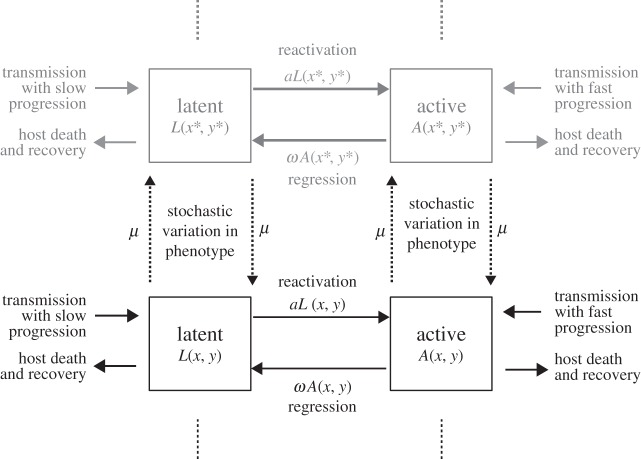Figure 1.
Flow diagram of the M. tuberculosis evolution model. Mycobacterium tuberculosis infections are either latent (with density L) or active (with density A) and are further characterized by the potential latency of the infecting strain x, and the probability y that the infecting strain enters a latent state upon infection. Infection strains undergo stochastic incremental changes in phenotype at rate μ. Active infections regress to latency at rate ω, while latent infections reactivate at a rate a. Infections are lost if the host dies or recovers from the infection. Current infections can cause new infections that inherit the latency traits (x, y) of the infecting strain and undergo fast progression to the active state with probability 1−y. Otherwise, new infections will be initially latent (slow progression). Here, the grey colouring indicates a mutant strain with latency trait values (x*, y*).

